All issues

Volume 47, Issue 12
Displaying 1-7 of 7 articles from this issue
- |<
- <
- 1
- >
- >|
-
Kimiyuki Nishiguchi1978 Volume 47 Issue 12 Pages 792-795
Published: December 05, 1978
Released on J-STAGE: August 05, 2011
JOURNAL FREE ACCESSDownload PDF (353K) -
Noboru Nishiyama1978 Volume 47 Issue 12 Pages 796-804
Published: December 05, 1978
Released on J-STAGE: August 05, 2011
JOURNAL FREE ACCESSDownload PDF (608K) -
Tadashi Watanabe1978 Volume 47 Issue 12 Pages 804-810
Published: December 05, 1978
Released on J-STAGE: August 05, 2011
JOURNAL FREE ACCESSDownload PDF (486K) -
Michio Inagaki, Yoshiki Muramatsu, Yoshinori Fujishiro, Satoshi Ogasaw ...1978 Volume 47 Issue 12 Pages 811-816
Published: December 05, 1978
Released on J-STAGE: August 05, 2011
JOURNAL FREE ACCESSTo select the preheating condition for prevention of weld cold cracking, it is necessary to know the cooling time from peak to a low temperature as about 100 or 50°C. Therefore, nomographs were made to estimate the cooling time to a low temperature and preheating time, etc. in case of welding with local preheating. Appropriate values were obtained from these, nnmoeranhs.View full abstractDownload PDF (419K) -
Effect of Emery Paper GrindingIkuo Okamoto, Tadashi Takemoto1978 Volume 47 Issue 12 Pages 816-821
Published: December 05, 1978
Released on J-STAGE: August 05, 2011
JOURNAL FREE ACCESSVacuum brazing of aluminum with BA 4047 filler alloy can be performed by the inserted type brazing in which filler alloy is preinserted between the vertical and horizontal members. Grinding by emery papers of 80-600 grade is suitable for the surface treatment of aluminum vacuum brazing. Obtained results are summarized as follows. (1) The ratio of vertical leg length (LV) against horizontal leg length (LH), LV/LH, is convinient and clear for the estimation of brazability (ability of fillet formation). (2) Grinding by fine emery papers led contamination of ground surface by including the emery paper component SiC. Sound fillet was not formed by grinding with 1500 grade emery paper which retained much inclusion on treated surface. Sound fillet was obtained by grinding 80-600 grades emery papers in which little inclusion was observed. Poor fillet formation is attributable to the scarce reactivity of SiC with melted Al-Si filler alloy. (3) Pertinent pretreatment of base metal is important for the sound fillet formation, especially the vertical member should react rapidly with melted filler alloy. (4) Clear correspondence is not found between the spraedability and the fillet formation.View full abstractDownload PDF (3084K) -
Noboru Kato, Hiroshi Tamura, Shigemi Maki, Masashi Suzuki, Ryohei Kuma ...1978 Volume 47 Issue 12 Pages 821-826
Published: December 05, 1978
Released on J-STAGE: August 05, 2011
JOURNAL FREE ACCESSIn the previous report, the mechanism and its fundamental experiments are described for prevention of weld cracking in cast iron by stress decrease due to γ-α transformation expansion and superplasticity.
In the present paper, weld cracking. study is introduced in order to confirm the effectiveness of the stress decrease to avoid weld cracking practically, in both cases of electroslag and shielded metal arc weldings. Several kinds of welding wire and electrode are made experimentally varying with these contents. Using restraint weld cracking test plates, contraction stress curves with decreasing temperature are obtained related to weld cracking in each material.
From above test results, it is ascertained that weld cracking can be eliminated by use of the combination of material and welding cooling rate with which the transformation is apt to occur in lower temperature. Namely, in electroslag welding, crack could be arrested by the addition of 1-4% Ni, 1-1.5% Mo and about 1% Mn. However, in case of shielded metal arc welding, the addition of only about 0.3% Ni and 0.15% Mo is found to prevent weld cracking in behalf of its faster welding cooling rate.View full abstractDownload PDF (1833K) -
Kenji Watanabe1978 Volume 47 Issue 12 Pages 827-832
Published: December 05, 1978
Released on J-STAGE: August 05, 2011
JOURNAL FREE ACCESSThe present paper describes an A. C. arc welder which is controlled by inverse parallel thyristors in the primary winding. These thyristors operate as a protector of electric shock of the welder. The experimental results show that this apparatus has several advantages of lower secondary voltage in no load condition, lower mechanical noise, etc. So, this apparatus is found to be better than the usual one with electromagnetic switches; considering noise and wearing problems of mechanical contacts.
Being drived by phase controlled thyristors, the stability of arc emission of the apparatus is increased in the small current region, but the sharpness of the drooping characteristics is reduced, and the abnormal current arises in the large current region. This abnormal current in the primary winding of the welder under some controlling condition of thyristors, is stational current and contains much D. C. component. Considering the cost of the circuit, it was found to be satisfactory for the purpose of suppressing the abnormal current, to add continuous pulses following a control signal pulse, suitable pulse interval being 5°el.
Next, a simplified equivalent circuit for the A. C. arc welder is introduced, and the influence of the phase control of thyristor upon the drooping characteristics of the welder is shown. The theoretical curves obtained from the equivalent circuit agree well with the experimental results for the efficiency, the power factor and the drooping characteristics. It was conLluded that a feed back compensation circuit or its equivalent is necessary for A.C. arc welder controlled by thyristors.
In the last section, the influence of magnetic saturation upon the conduction angle of thyristor is discussed.View full abstractDownload PDF (1800K)
- |<
- <
- 1
- >
- >|